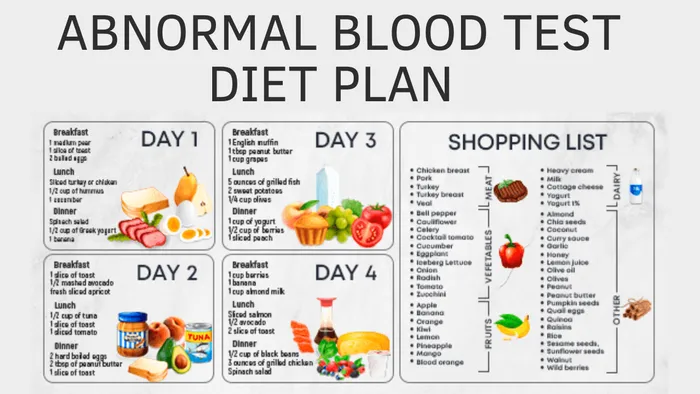How Kash Mann treated low hemoglobin?
Note - This article is written by one of our patients about their experiences with low hemoglobin.
My name is Kash Mann, and I'd want to share my story of low haemoglobin diagnosis while still a student.
I was a highly motivated and active high school student who was constantly moving. I excelled academically, was involved in a lot of extracurricular activities, and loved hanging out with my friends. I did, however, start to feel significantly less energetic and generally worn out. Simple chores that were formerly easy to do become difficult.
At first, I blamed my tiredness on my busy schedule and lack of sleep. But as time went on, the symptoms got worse and began to interfere with my day-to-day activities. I had the confidence to go to my parents about my worries since I was worried about my wellbeing.
Note - More stories from other patients at the end of this page
We both agreed that it was time to get a medical opinion and learn more about what was going on with my body. I was looking forward to our family doctor's visit as soon as I made an appointment.
I went into great detail about my symptoms at the appointment, including how they affected my schooling and extracurricular activities. My lifestyle, eating habits, and any recent changes in my health were all topics of discussion with the doctor.
The doctor prescribed a number of blood tests to identify the root of my weariness. The days before the results were tumultuous with worry and uncertainty. I couldn't help but be concerned by the results of the testing.

The day of the subsequent appointment finally arrived. We were in the doctor's office awaiting the test results with my parents by my side. With a stack of documents in hand, the doctor entered the room and took a seat. He started to discuss the findings while maintaining a serious face.
My blood tests showed a low haemoglobin level, he told us. Red blood cells contain the protein haemoglobin, which transports oxygen throughout the body. Haemoglobin levels in people my age should generally vary from 12.0 to 15.5 grammes per deciliter (g/dL). My haemoglobin level, which was measured at 8.5 g/dL, was regrettably far below the healthy threshold.
The news hit me like a flash of lightning. It was challenging to understand why my body wasn't working properly. My head was filled with questions, such as how this occurred. What did it imply for my wellbeing and capacity to enjoy my adolescence?

Although the diagnosis was alarming, the doctor gave me the reassurance that it was still possible to address the problem and get better. He went on to say that low haemoglobin levels frequently cause anaemia, which is characterised by a deficiency in the number of red blood cells needed to carry oxygen throughout the body.
The doctor suggested dietary adjustments to include iron-rich items in my meals to help me fight the low haemoglobin levels. He recommended eating meals like lean meats, leafy greens, beans, and fortified cereals because iron is essential for the formation of haemoglobin. Additionally, he emphasised the value of vitamin C in improving iron absorption and advised me to eat more citrus fruits, bell peppers, and tomatoes.
To assist rebuild my body's iron levels, the doctor recommended iron pills in addition to dietary changes. My haemoglobin levels would gradually rise, he said, and he urged me to have patience and stick to the prescribed course of action.
Although the diagnosis originally stunned me, I soon understood how crucial my health was. I enthusiastically accepted the lifestyle adjustments required to improve my condition with the constant support of my family.
I carefully planned my meals, making sure they contained a variety of foods high in iron. I cut processed and sugary meals out of my diet in favour of wholesome snacks. I never missed a dose of my iron pills because taking them every day became a habit.
I understood the value of self-care and stress management in addition to food adjustments. I put a high priority on getting enough sleep, making sure I slept well every night. Knowing that regular exercise may enhance blood circulation and general wellbeing, I also integrated it into my routine.
There were difficulties along the way. There were times when I felt frustrated and had setbacks, but I never wavered in my dedication to my health. My professors and friends never wavered in their support, acknowledging the challenges I faced and providing me with inspiration along the road.
As the months went by, I gradually started to see improvements. My level of energy increased, and the persistent fatigue disappeared. I was able to focus once more in class and participate fully in my extracurricular activities.
I went back to the doctor's office one day for a follow-up visit. The air was filled with anticipation as my blood was being extracted for yet another haemoglobin test. The results came a few days later. My haemoglobin had increased to 12.2 g/dL, which is within the range for someone my age.
It was a triumphant and relieving moment. The experience had given me priceless lessons about fortitude, self-care, and the significance of controlling my health. Despite the shock of the diagnosis, it marked a turning point in my life and sparked growth.
I still place a high priority on my health, leading a healthy lifestyle, and checking my haemoglobin levels frequently. My high school experience with low haemoglobin levels has made me a better and more resilient person, reminding me of the strength of will and the capacity to go beyond challenges.
People also viewed:
- How Ayan Acosta treated low hemoglobin levels?
- How Kaia Carr treated low hemoglobin levels?
- How Kash Mann treated low hemoglobin levels?
- How Paislee Wong treated low hemoglobin levels?
- How Elliot Parks treated low hemoglobin levels?
- How Gianni Salinas treated low hemoglobin levels?
- How Royalty Fitzpatrick treated low hemoglobin levels?
- How Blaze Raymond treated low hemoglobin levels?
